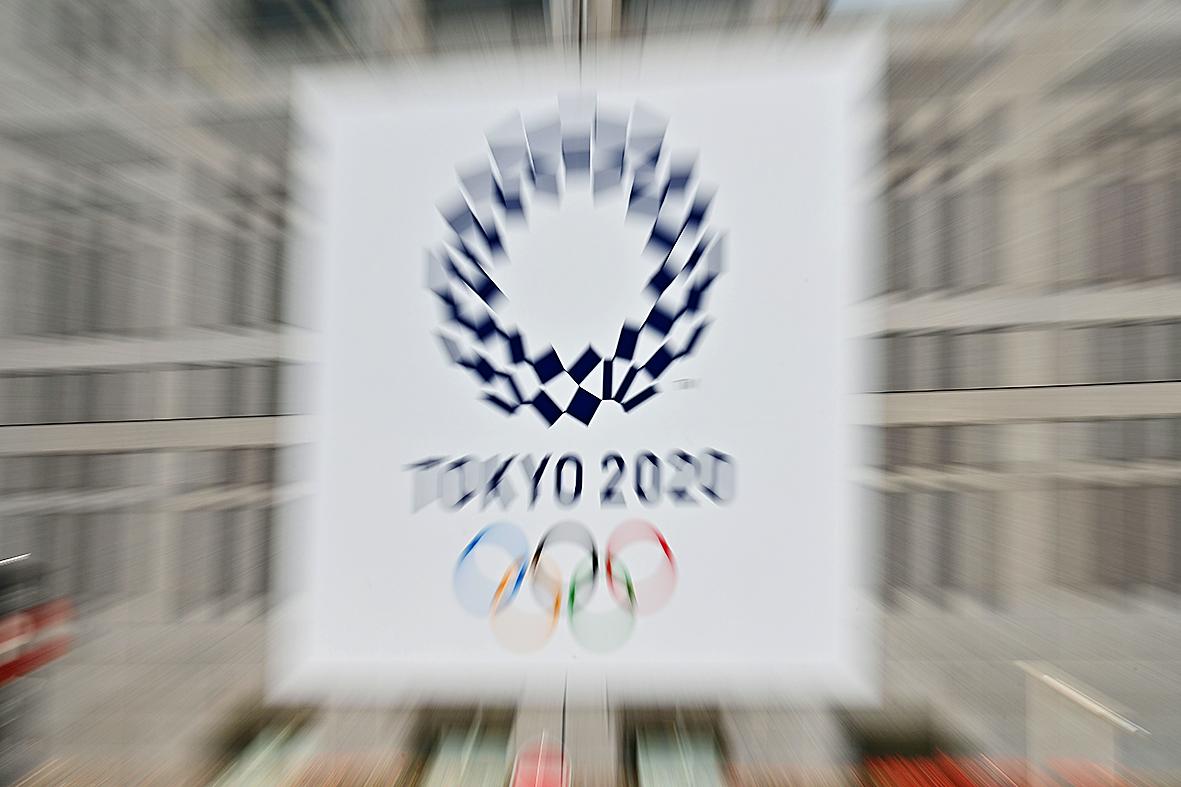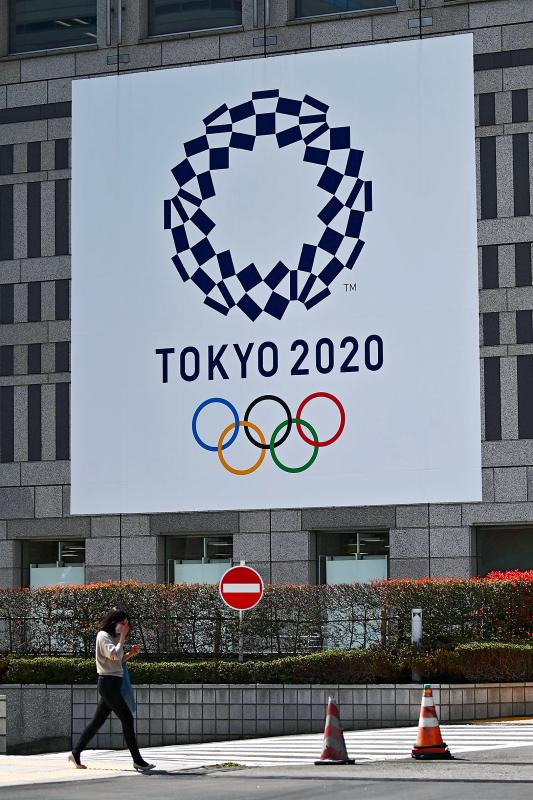Next to a countdown showing the number of days to the Tokyo 2020 Olympics is scrawled “just cancel it.” Not a scene from real life but from Akira, a remarkably prescient cult Japanese manga series.
With the announcement that the Tokyo 2020 Olympics have been postponed due to the coronavirus pandemic, the coincidence has led to Akira trending on Japanese social media with fans hailing its mystic powers.
Created by Katsuhiro Otomo, Akira first appeared in comic form, with thousands of pages produced between 1982 and 1990. An anime version came out in 1988 and became a global sci-fi hit.

Photo: AFP
The action takes place in a dystopian 2019 set in a sinister megacity called “neo-Tokyo,” built after the old capital was destroyed in a mysterious explosion in 1982 that set off World War III.
It tells the story of a boy called Akira, who acquired psychic superpowers from a secret military program but became so powerful he was disintegrated.
His organs were buried deep underground in an iron box — on the construction site of the Olympic Stadium — only to be found later by another boy called Tetsuo who eventually inherits his powers.

Photo: AFP
“The world of Akira can be summed up in one word: cyberpunk. A futuristic and high-tech world but with a huge gap between the rich and the downtrodden,” said Matthieu Pinon, a specialist on Japanese manga and anime.
While the Olympics are not central to the plot, Tokyo 2020 appears several times in the story, with uncanny if coincidental similarities to the real Games, now postponed until next year.
In an example of life imitating art, the real countdown clocks at Tokyo 2020 headquarters have now been replaced with a sign that reads “under consideration.”
“The story unfolds in a way that suggests a cancellation or a postponement (of the Olympics) is inevitable,” Kaichiro Morikawa, an expert on Japanese pop culture at Tokyo’s Meiji University, said.
Images of the Tokyo 2020 Olympic Stadium construction site, with red and white cranes poking from an oval structure, were a striking reminder to Akira fans of the way it was depicted in the comic.
‘UNUSUAL SENSE OF REALITY’
The Japanese government framed Tokyo 2020 as the “Recovery Games,” aiming to show how the country had bounced back from the devastating 2011 earthquake, tsunami and nuclear meltdown of the Fukushima Daiichi plant.
In the same way, the Tokyo 2020 Games in Akira could be seen as the authorities “reasserting their glory after the destruction” of the fictional 1982 explosion, said Patrick Gaumer, a manga expert.
The fictional Olympic Stadium was built near the ruins of that explosion — a clear allusion to the nuclear bombs dropped on Hiroshima and Nagasaki — as a symbol of recovery, Gaumer said.
In another coincidence, the Akira series also features some fictional news headlines that would resonate today, one of which reads: “The World Health Organization criticizes the measures taken against the pandemic.”
But Pinon said this should be seen as an “element that adds to the atmosphere, nothing more,” as it stands outside the main plot.
So is Akira a prophecy of the future? Morikawa believes it is more like a “reinterpretation of the recent past (post-war Japan), projected onto a fictional near future.”
Pinon said the author, born in 1954, was drawing on the major events of his childhood for his work.
These included the 1964 Olympics, when Japan re-announced itself to the world from the rubble of World War II, as well as the student revolutions of 1968, the authoritarian governments of the time and the frantic redevelopment of Tokyo.
As for the references to Tokyo 2020, “all I can say is that such a coincidence might add an unusual sense of reality to the reading/viewing experience of what is already a masterpiece,” Morikawa said.

On April 26, The Lancet published a letter from two doctors at Taichung-based China Medical University Hospital (CMUH) warning that “Taiwan’s Health Care System is on the Brink of Collapse.” The authors said that “Years of policy inaction and mismanagement of resources have led to the National Health Insurance system operating under unsustainable conditions.” The pushback was immediate. Errors in the paper were quickly identified and publicized, to discredit the authors (the hospital apologized). CNA reported that CMUH said the letter described Taiwan in 2021 as having 62 nurses per 10,000 people, when the correct number was 78 nurses per 10,000

As we live longer, our risk of cognitive impairment is increasing. How can we delay the onset of symptoms? Do we have to give up every indulgence or can small changes make a difference? We asked neurologists for tips on how to keep our brains healthy for life. TAKE CARE OF YOUR HEALTH “All of the sensible things that apply to bodily health apply to brain health,” says Suzanne O’Sullivan, a consultant in neurology at the National Hospital for Neurology and Neurosurgery in London, and the author of The Age of Diagnosis. “When you’re 20, you can get away with absolute

May 5 to May 11 What started out as friction between Taiwanese students at Taichung First High School and a Japanese head cook escalated dramatically over the first two weeks of May 1927. It began on April 30 when the cook’s wife knew that lotus starch used in that night’s dinner had rat feces in it, but failed to inform staff until the meal was already prepared. The students believed that her silence was intentional, and filed a complaint. The school’s Japanese administrators sided with the cook’s family, dismissing the students as troublemakers and clamping down on their freedoms — with

As Donald Trump’s executive order in March led to the shuttering of Voice of America (VOA) — the global broadcaster whose roots date back to the fight against Nazi propaganda — he quickly attracted support from figures not used to aligning themselves with any US administration. Trump had ordered the US Agency for Global Media, the federal agency that funds VOA and other groups promoting independent journalism overseas, to be “eliminated to the maximum extent consistent with applicable law.” The decision suddenly halted programming in 49 languages to more than 425 million people. In Moscow, Margarita Simonyan, the hardline editor-in-chief of the